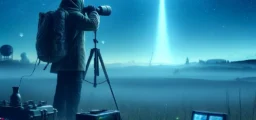The Future of Testing Psi

There are several ways that researchers could test psychic phenomena in the future more rigorously and scientifically. Here are a few examples:
- Large-scale experiments: One issue with many past experiments on psychic phenomena is that they have been small-scale and have not been independently replicated. To increase the credibility of the results, future investigations should be conducted on a larger scale and with multiple groups of participants and should be independently replicated by other researchers.
- Randomized controlled trials: Another issue with many past experiments on psychic phenomena is that they have not used rigorous experimental designs. In order to increase the credibility of the results, future investigations should use randomized controlled trials (RCTs), considered the gold standard in empirical research. In an RCT, participants are randomly assigned to different groups (e.g., a control group and an experimental group), and the results are compared.
- Double-blind studies: Many past experiments on psychic phenomena have been “single-blind,” meaning that the experimenter knows which participants are in the control group and which are in the experimental group. This can introduce bias, as the experimenter may unconsciously treat the participants differently based on their group assignment. In order to increase the credibility of the results, future experiments should be “double-blind,” meaning that neither the experimenter nor the participants know which group they are in.
- Investigating specific claims: Past research on psychic phenomena has often been conducted generally, looking at various types of psychic experiences without focusing on particular claims. In order to increase the credibility of the results, future research should investigate specific claims of psychic phenomena, such as telepathy or precognition, rather than focusing on general psychic experiences.
-
Using multiple measurements: Some earlier research relied only on self-reported experiences or the outcomes of the researcher. To increase the credibility of the results, future research should use multiple measurements such as physiological response, behavioral response, objective data, and so on to make sure the results are more reliable.
-
Employing advanced technology: Some researchers are now exploring the use of advanced technology in investigating psychic phenomena. For example, functional magnetic resonance imaging (fMRI) or electroencephalography (EEG) can be used to measure brain activity in participants who claim to have psychic experiences. Additionally, virtual reality technology could be used to create experimental scenarios in which psychic experiences could be tested.
While psychic phenomena remain controversial, it’s important to remember that science is a self-correcting process and that new discoveries can be made when various research methodologies are combined. It’s also important to note that scientific research will always be subject to the limitations of current knowledge and technology, but that doesn’t mean that new advancements and methods couldn’t reveal something previously unexpected in the future. Therefore, researchers interested in studying psychic phenomena should continue to strive for rigorous experimental design and replication in order to increase our understanding of these phenomena.






Comments are closed.